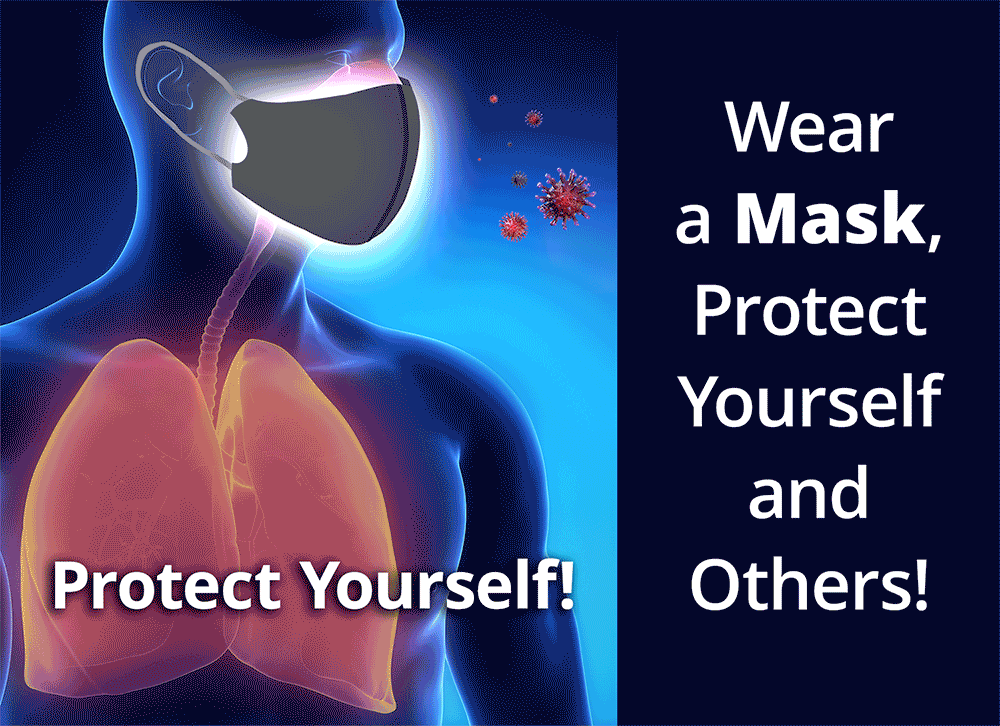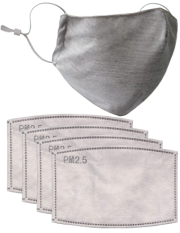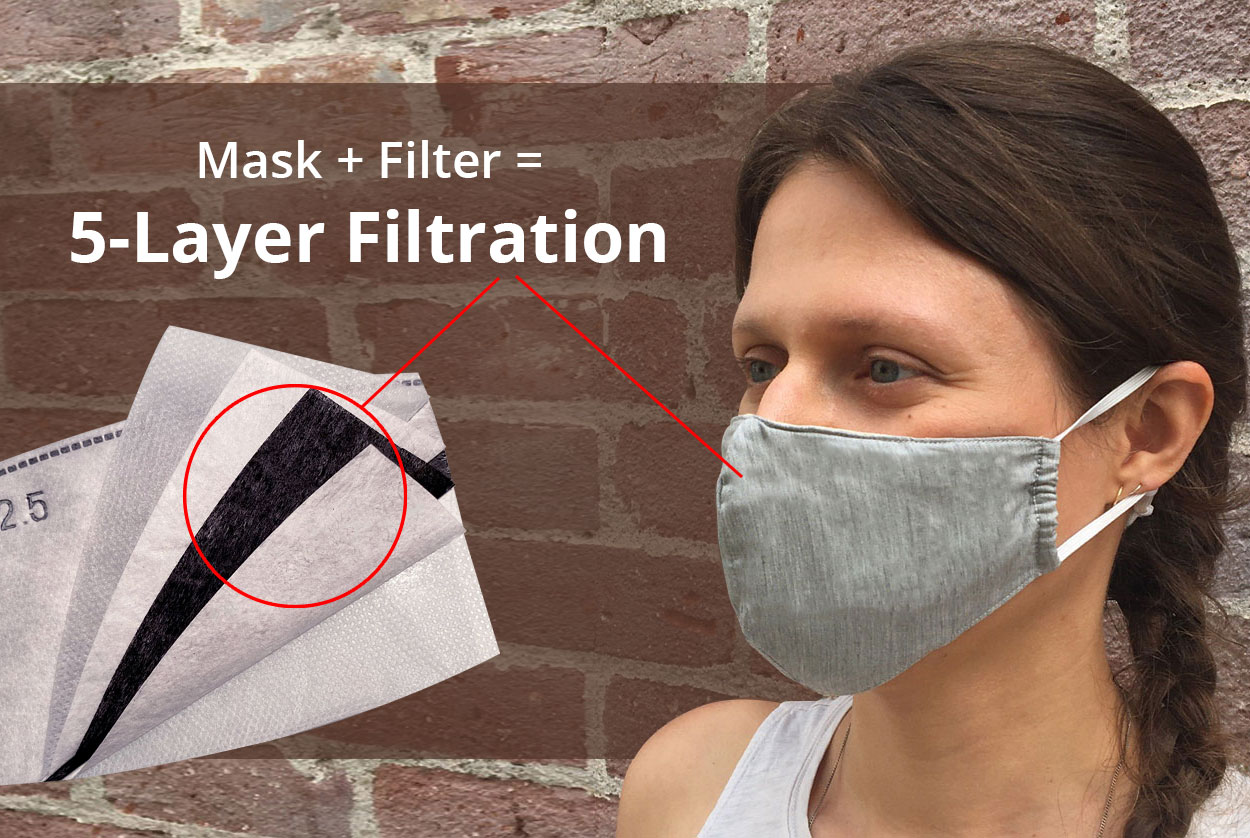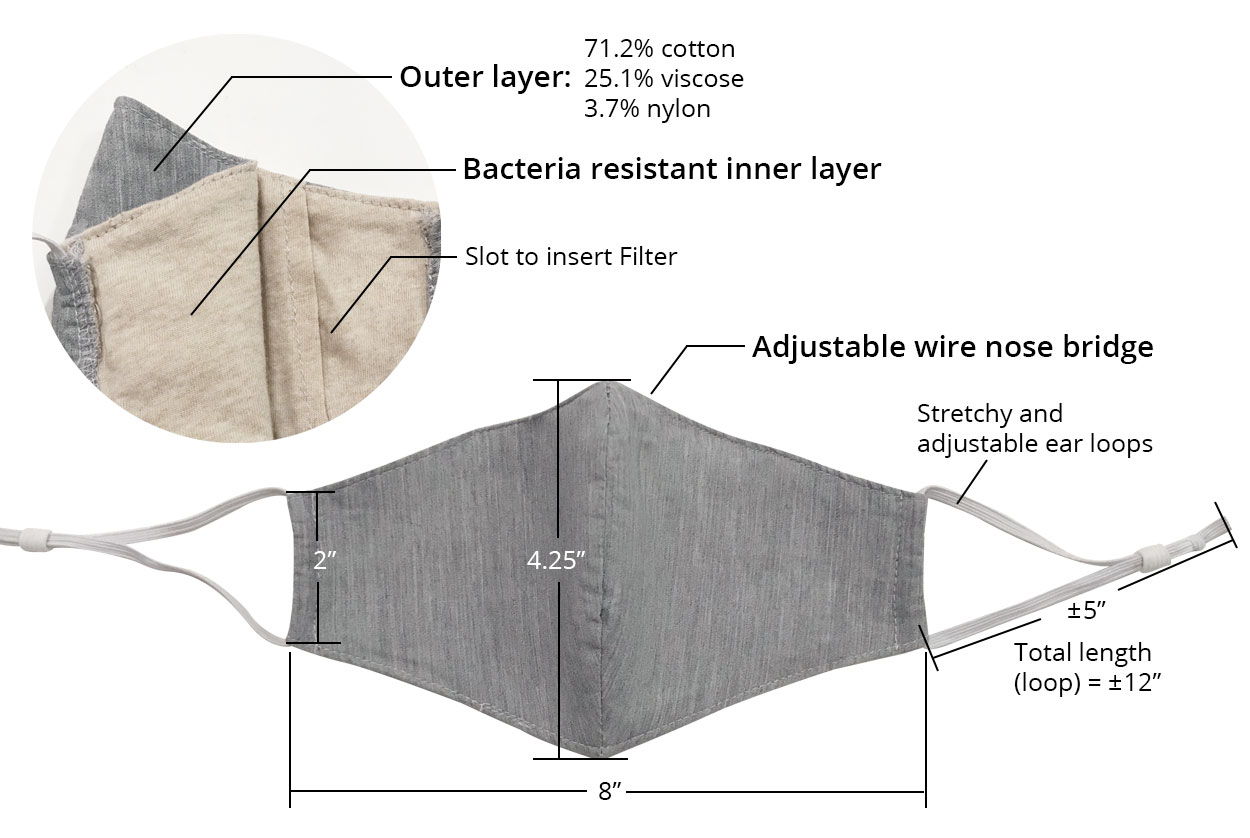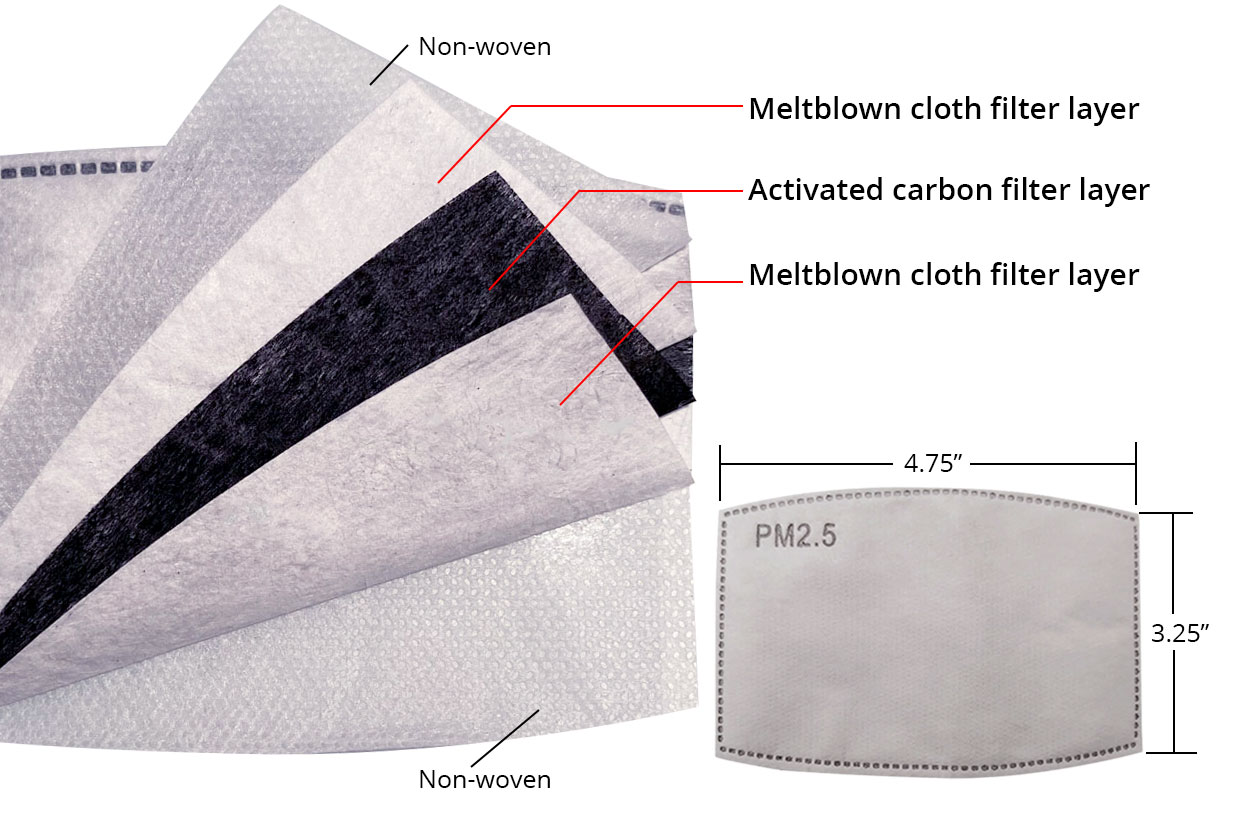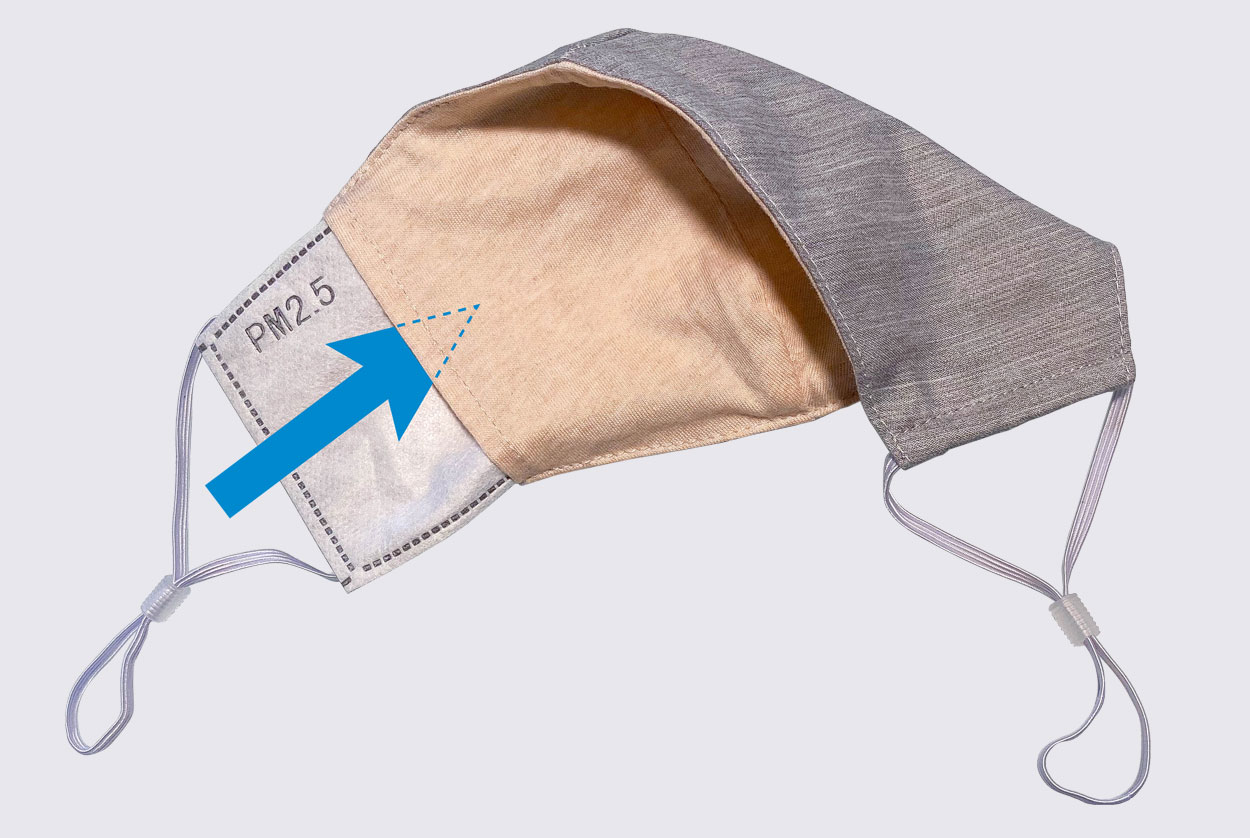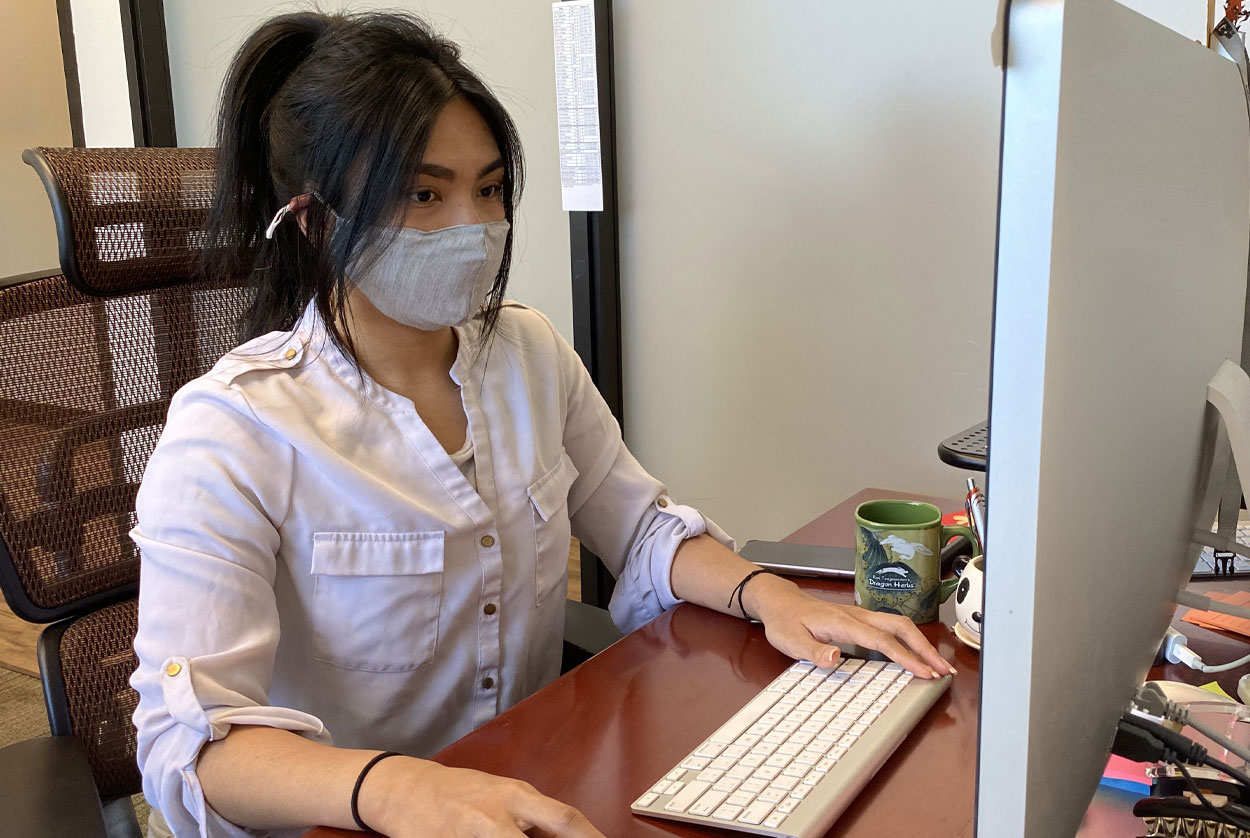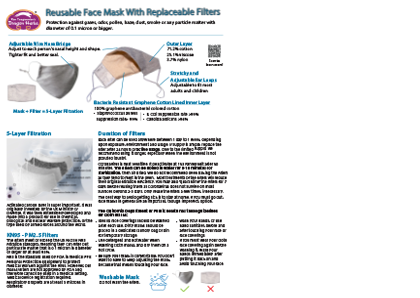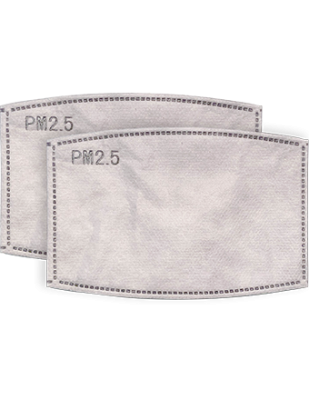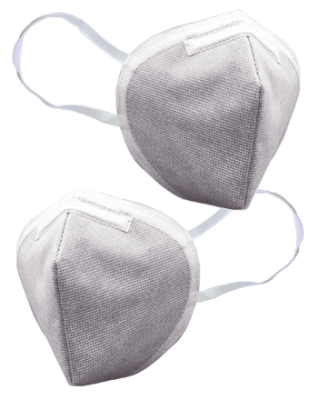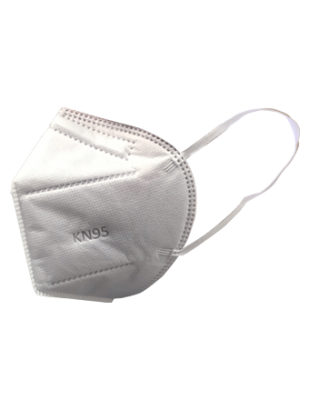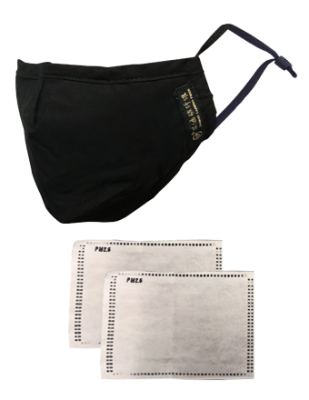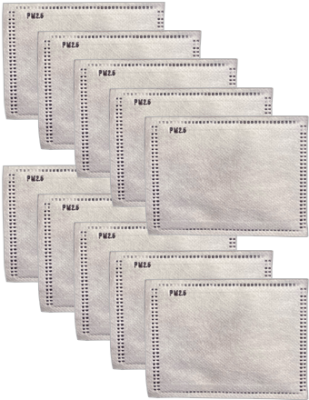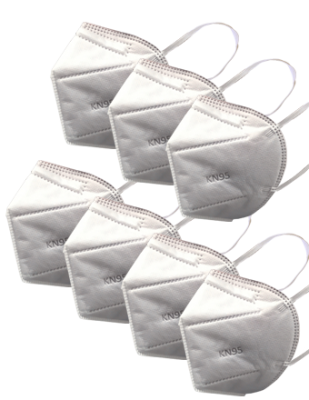The reusable face mask contains 4 replaceable PM2.5/kN95 filters. The masks are washable, but not the filters. With the filter, the mask protects against gases, odor, pollen, haze, dust, smoke or any particulate matter with diameter of 0.1 micron (one millionth of a meter) or bigger. The mask will hold a KN95 filter made of 5 layers of high technology filtration.
Its innermost layer is 100% graphene antibacterial cotton which is a bacteria resistant cloth. It has suppression rates over 99% against Staphylococcus aureus, E. Coli and Candida albicans.
The middle layer, the inserted filter, is activated carbon cloth. Activated carbon layer is super important. It was originally invented by the UK Ministry of Defense. It was then extensively developed and made into a product for use in chemical, biological and nuclear warfare protection, of the type used by armed forces around the world.
The outermost layer is a supermicro-satin fabric, which makes the mask lightweight and breathable.
The pack contains four PM2.5/kN95 filters. These filters meet or exceed the US NIOSH N95 filtration standard, meaning they can filter out particulate matter that is 0.1 micron in diameter or larger by at least 95%.
N95 is the standard used by FDA in medical PPE Personal Protection Equipment to protect medical workers against the virus. However, our masks/filters are not approved by FDA and therefore cannot be used in a medical setting. Medical device registration required.
Respiratory droplets are at least 5 microns in diameter.
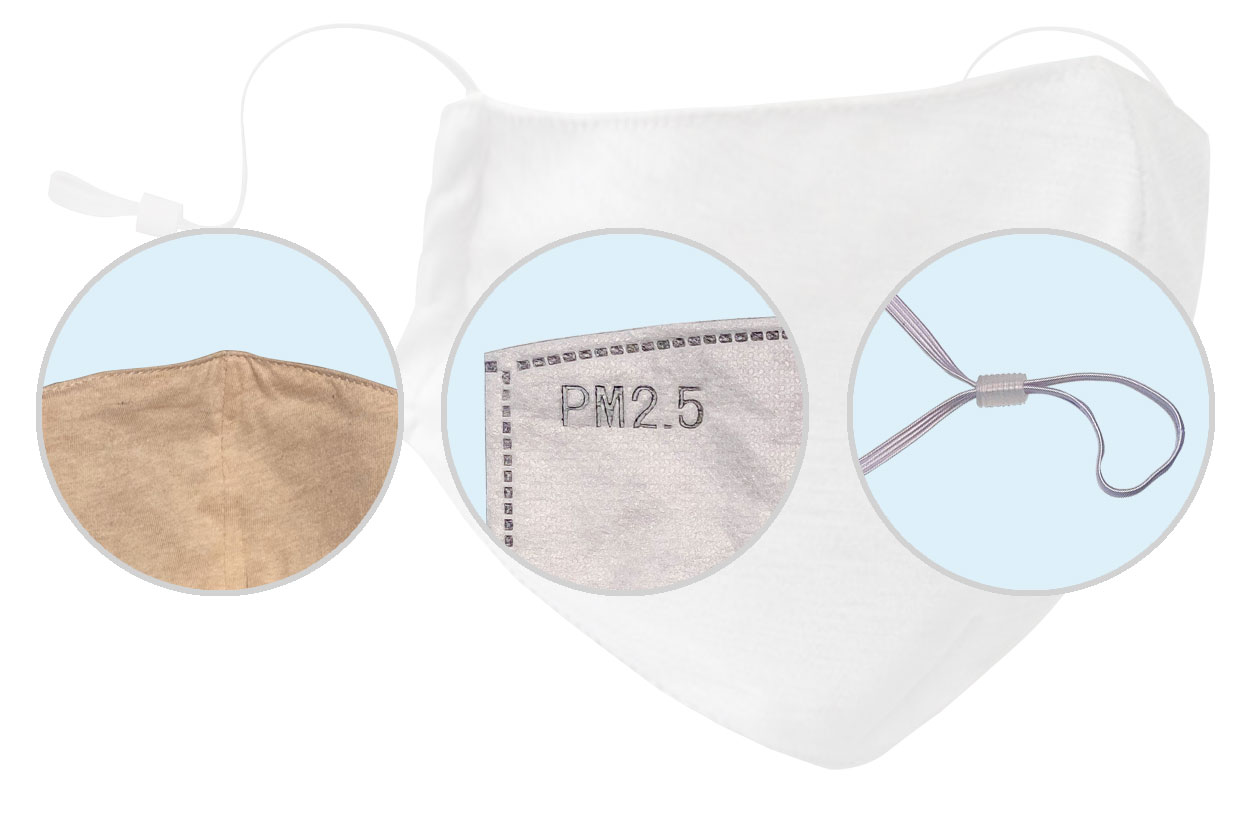
The mask's adjustable wire nose bridge adjusts to each person's nasal height and shape for a tighter fit and better seal. It's stretchy and adjustable ear loops adjusts to fit most adults and children.
The mask is designed not to have the air valve feature as the air flowing outwards through the one-directional valve is not filtered. The air would escape without going through the filters. If one is sick, they could release their respiratory droplets into the public airway, which is not good for protecting others.
